Culture
The Groote Eylandt archipelago is the home of the Warnindilyakwa people. In the second half of the 18th Century, they invited the Nunggubuyu to migrate from the mainland to Groote. Together they are known by their language name Anindilyakwa.
Thought to be one of the most ancient languages in Australia, Anindilyakwa is the first language spoken among all 14 clan groups of the archipelago. The three Indigenous Communities of Angurugu, Umbakumba and Milyakburra on Bickerton are home to 1500 people who strongly embrace their culture and ceremonial traditions.
The Anindilyakwa Songlines explain how the land, waters, animals and people of the archipelago were created. Their complex kinship system means everyone is related to each other and there are strict rules about marriage, family and day-to-day interactions.
Cultural traditions, knowledge and skills are passed on to the younger Anindilyakwa generations by their families as well as through programs such as the Learning on Country partnership between local schools and Indigenous rangers.
Children are taken out of the classroom and into the bush and the beach to learn spear making, basket making, fishing and hunting. They collect bush tucker such as wild yams, green plum, black currant, bush onion, red kurrajong seeds, and sugarbag (native bee honey). They also learn Songlines, which explain country and connections, from the Elders who go out with the bush trip groups.

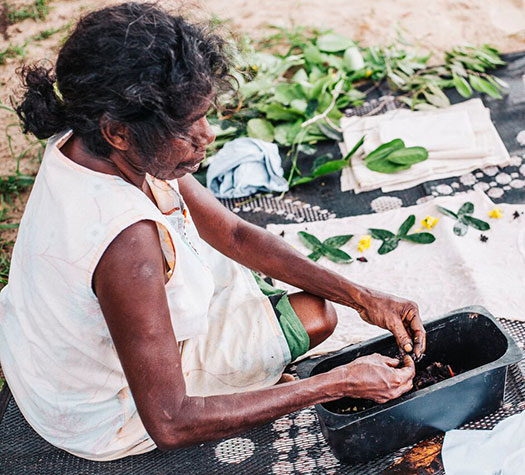


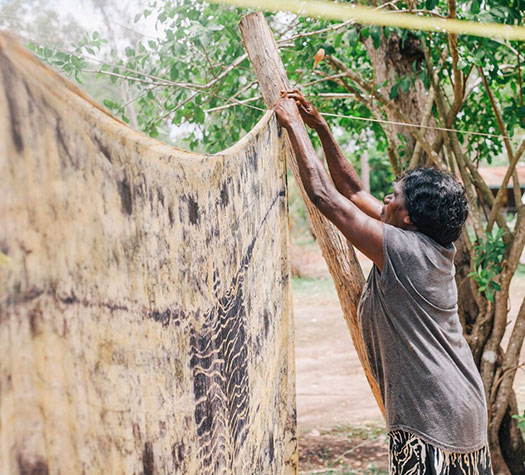
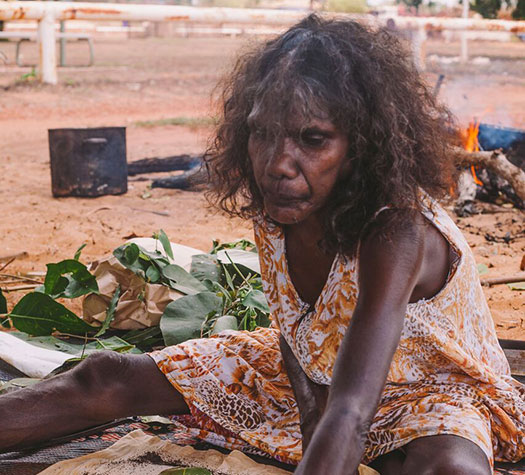
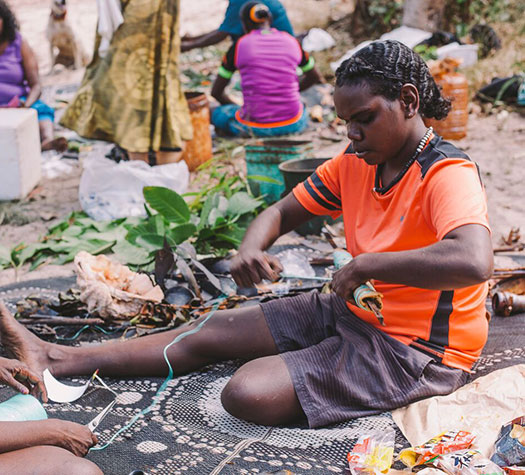
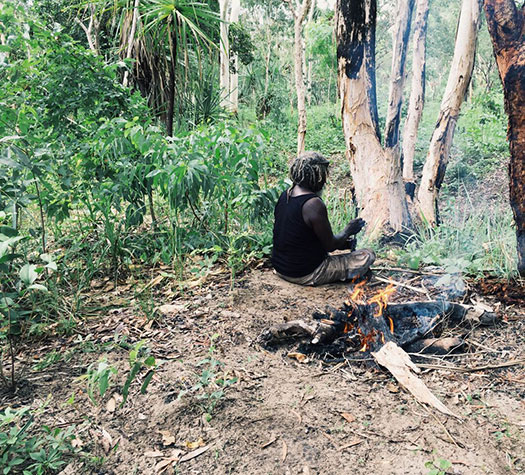
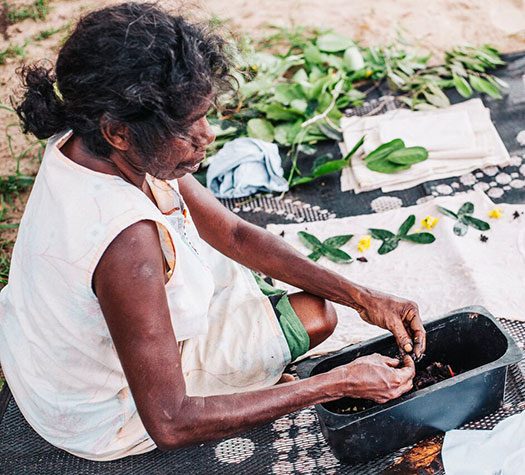
The women collect leaves, roots, berries and firewood to make patterns on fabric which is then rolled and boiled in dye pots. This makes the fabric look like the different layers of the land.
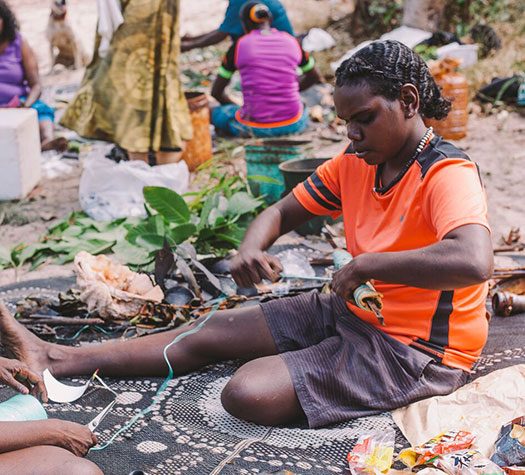
Traditional basket weaving using pandanus leaves continues to be practised by the ladies. The same techniques are repeated with ghost nets, the forgotten fishing netting that washes up on beaches and endangers marine life.
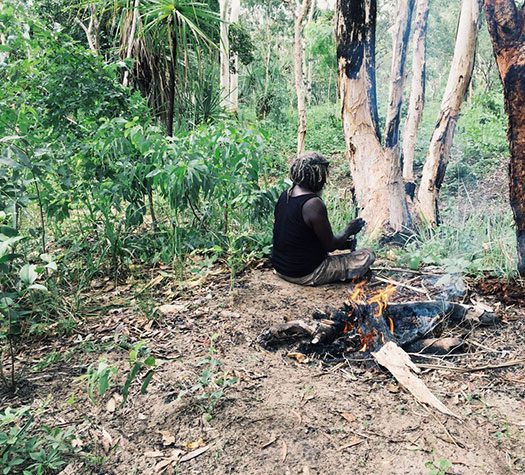
Spears and woomeras were traditionally carved for hunting and continue to be carved today. The Anindilyakwa artists also carve animals, especially birds, and instruments which are used for ceremonies.
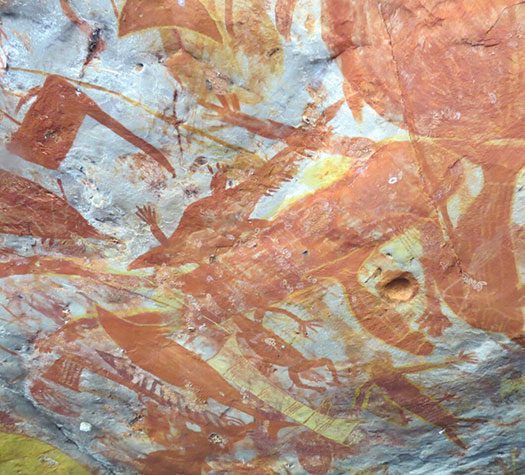
Groote Eylandt is known for dash paintings, a unique painting style endemic to the region. The defining blackness of many paintings is created from the manganese which has been mined on the Eylandt for decades.
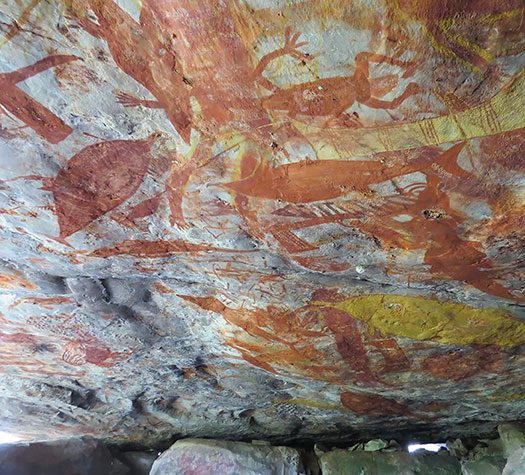
Ancient rock art is prolific on Groote Eylandt and can be found everywhere from the coast to the central hill in caves and on overhanging rocks. It shows the connection of the Warnindilyakwa people from the sea to the land, the sky and the spiritual world. The art was used to teach and share stories across the generations.
The artworks feature all creatures and totems of the Eylandt including subjects such as turtles, dugong, shark, stingray, mermaid, dolphin, barracuda, crocodile, snake, ants, mantis, mosquito, sand fly, winds, hairy men, spirits, celestial bodies and visiting Macassan and European boats.
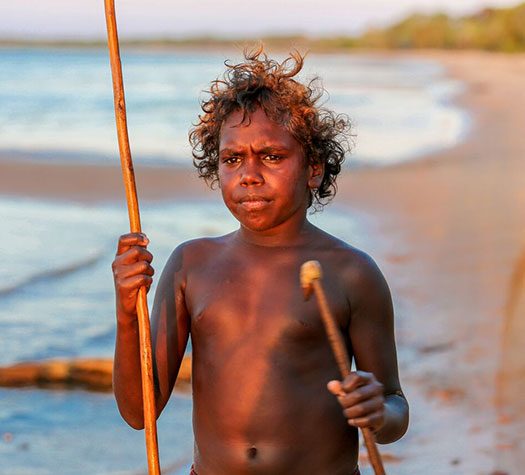
Anindilyakwa people continue to make traditional spears to hunt for fish, crab, turtle and dugong just as their ancestors did from canoes, the beach and rocks. These days the canoe with its paddle and sail has been replaced by the tinnie and an outboard motor.
There are songs and dances about spears, woomera and spearing techniques which are still performed as part of the process of passing knowledge and skills on to younger generations.
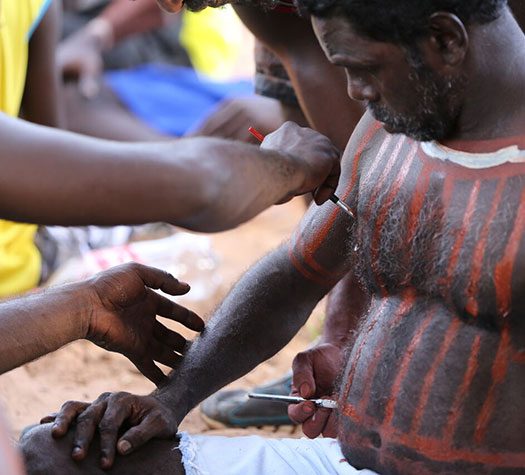
Warnindilyakwa are traditionally governed by their ceremonial beliefs. Ceremonies are performed to recharge and maintain these beliefs. Most ceremonies are sacred with knowledge rights of different aspects shared according to cultural, clan and gender hierarchies.
A few examples of ceremonies still being performed are:
- The Mardayan Ceremony involves the education of young men into the knowledge of skin names, Songlines, and correct marriage partnerships.
- The Death Ceremony ensures the spirit of the deceased person is shared into a newborn life, man to man, woman to woman.
- The Smoking Ceremony (Arkulungkwa) frees the spirit of a dead person to go back to their ancestral resting place or sometimes can be used to lift or clear a curse.
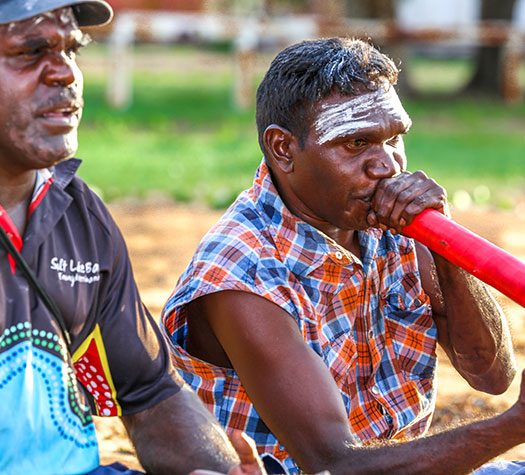
Elders continue to sing traditional songs including:
Wurramara Songs – Freshwater, Falcon Hawk
Mamarika and Amagula Songs – Caterpillar, North East Wind, Yamara and Seven Sisters
Lalara, Yantarrnga, Wurragwagwa and Maminyamanja Songs – Stingray, Pretty Parrot, Curlew and Warrior
Barra, Murrungun, Jaragba Songs – Devil Dance, Warrior, Morning Star, Parrot Fish, Brolga and Dhumbul (Feather Stick)
Wurrawilya, Numamirdidi Songs – Fish Hawk (Ngark Ngark)
Wurramarba Songs – Sailing Boat, Brown Pidgeon, Red Flag and Dinghy
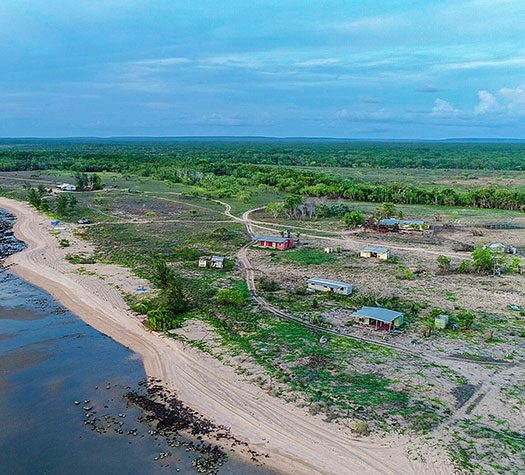
Outstations are scattered around Groote Eylandt with many used as camping areas for families to return to their clan’s estate to spend time together hunting, fishing and performing other cultural activities. Some outstations may have been traditionally used by the clan as they offered access to good tucker, transport and security, while others may have been designated by the authorities in days gone by. Outstations fall in and out of favour as places to camp.